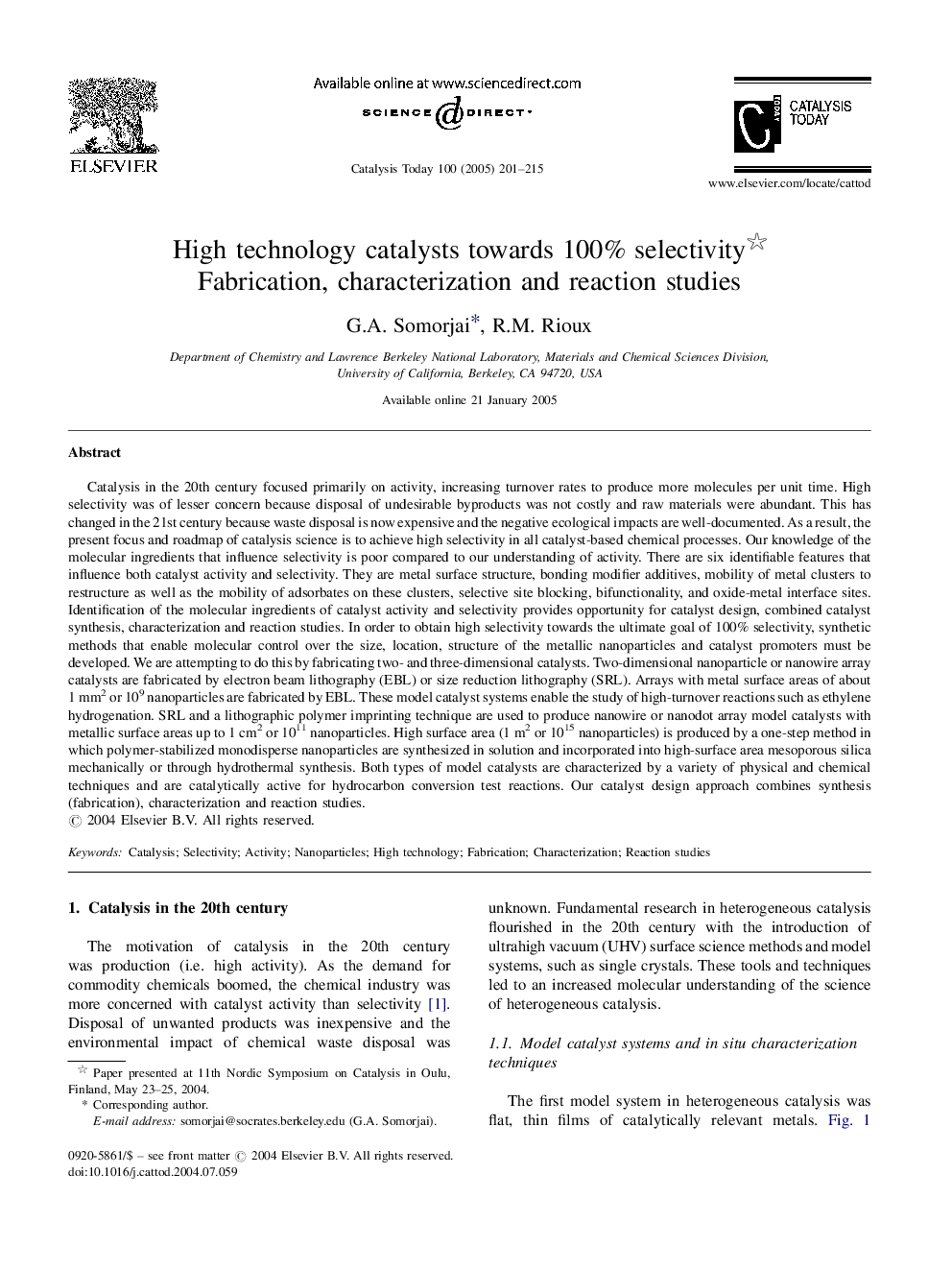| کد مقاله | کد نشریه | سال انتشار | مقاله انگلیسی | نسخه تمام متن |
|---|---|---|---|---|
| 9610487 | 47207 | 2005 | 15 صفحه PDF | دانلود رایگان |
عنوان انگلیسی مقاله ISI
High technology catalysts towards 100% selectivity
دانلود مقاله + سفارش ترجمه
دانلود مقاله ISI انگلیسی
رایگان برای ایرانیان
کلمات کلیدی
موضوعات مرتبط
مهندسی و علوم پایه
مهندسی شیمی
کاتالیزور
پیش نمایش صفحه اول مقاله

چکیده انگلیسی
Catalysis in the 20th century focused primarily on activity, increasing turnover rates to produce more molecules per unit time. High selectivity was of lesser concern because disposal of undesirable byproducts was not costly and raw materials were abundant. This has changed in the 21st century because waste disposal is now expensive and the negative ecological impacts are well-documented. As a result, the present focus and roadmap of catalysis science is to achieve high selectivity in all catalyst-based chemical processes. Our knowledge of the molecular ingredients that influence selectivity is poor compared to our understanding of activity. There are six identifiable features that influence both catalyst activity and selectivity. They are metal surface structure, bonding modifier additives, mobility of metal clusters to restructure as well as the mobility of adsorbates on these clusters, selective site blocking, bifunctionality, and oxide-metal interface sites. Identification of the molecular ingredients of catalyst activity and selectivity provides opportunity for catalyst design, combined catalyst synthesis, characterization and reaction studies. In order to obtain high selectivity towards the ultimate goal of 100% selectivity, synthetic methods that enable molecular control over the size, location, structure of the metallic nanoparticles and catalyst promoters must be developed. We are attempting to do this by fabricating two- and three-dimensional catalysts. Two-dimensional nanoparticle or nanowire array catalysts are fabricated by electron beam lithography (EBL) or size reduction lithography (SRL). Arrays with metal surface areas of about 1Â mm2 or 109 nanoparticles are fabricated by EBL. These model catalyst systems enable the study of high-turnover reactions such as ethylene hydrogenation. SRL and a lithographic polymer imprinting technique are used to produce nanowire or nanodot array model catalysts with metallic surface areas up to 1Â cm2 or 1011 nanoparticles. High surface area (1Â m2 or 1015 nanoparticles) is produced by a one-step method in which polymer-stabilized monodisperse nanoparticles are synthesized in solution and incorporated into high-surface area mesoporous silica mechanically or through hydrothermal synthesis. Both types of model catalysts are characterized by a variety of physical and chemical techniques and are catalytically active for hydrocarbon conversion test reactions. Our catalyst design approach combines synthesis (fabrication), characterization and reaction studies.
ناشر
Database: Elsevier - ScienceDirect (ساینس دایرکت)
Journal: Catalysis Today - Volume 100, Issues 3â4, 28 February 2005, Pages 201-215
Journal: Catalysis Today - Volume 100, Issues 3â4, 28 February 2005, Pages 201-215
نویسندگان
G.A. Somorjai, R.M. Rioux,